Monthly Diary 2015
Monthly Diary 2015
December 2015
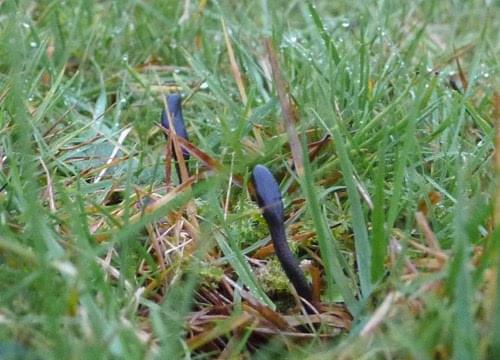
Well, we are certainly finishing the year on a high note! We have just heard, from Natural England that we have been awarded a five year grant under the new high tier Countryside Stewardship scheme. This will allow us to help conserve Pipe Green as meadowland, under the guidance of ecologists from Natural England. It is fantastic news and it is rewarding to know that the professional ecologists view Pipe Green as an important meadowland site. This has been illustrated this month by the discovery of some very interesting fungi, known as earth tongues. These are rather weird looking fungi and look a bit like snake's heads - they are however only 2 cm tall and don't bite! I was delighted to find them as, along with waxcaps, they are important indicator species of unimproved meadowland.
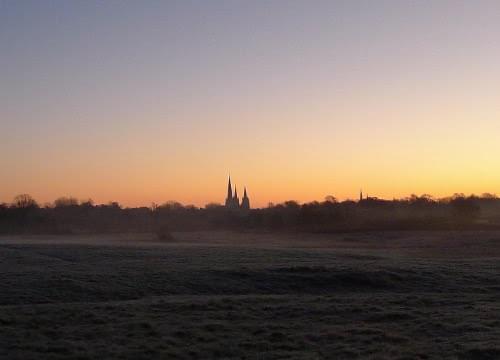
Finally, just to wish all our members and supporters a Happy Christmas and New Year. Thank you for all your suport over the 2015 and we look forward to an exciting 2016!
November 2015
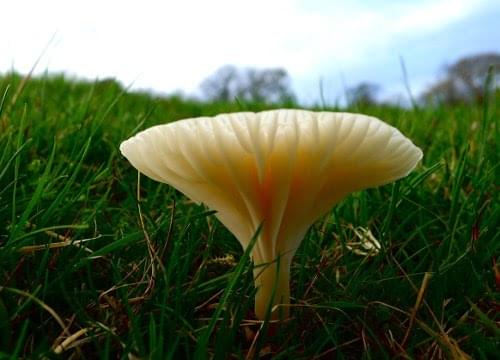
With the very mild and damp November, there have been a lot of different fungi fruiting on the Green, with the waxcaps being some of the most colourful. These are often referred to as the "orchids of the fungi world" and apart from been beautiful, they are also important indicators of unimproved nutrient-poor meadowland. The waxcaps, along with three other groups of fungi are used by ecologists to assess the importance of a site. I was very pleased with the photo on the right, although I did get rather wet knees!
 I have managed to put the trail camera a few times this month, in an attempt to record some foxes, but so far, I have not had much luck. I did manage, however, to get some quite good footage of a green woodpecker. These are very distinctive birds and apart from being green, have a bright yellow underside and a red crown. If you look carefully at the video, there is another green woodpecker behind the thistle. They do normally breed in the trees on the edge of the Green and can often be heard as they have a characteristic call or yaffle.
I have managed to put the trail camera a few times this month, in an attempt to record some foxes, but so far, I have not had much luck. I did manage, however, to get some quite good footage of a green woodpecker. These are very distinctive birds and apart from being green, have a bright yellow underside and a red crown. If you look carefully at the video, there is another green woodpecker behind the thistle. They do normally breed in the trees on the edge of the Green and can often be heard as they have a characteristic call or yaffle.
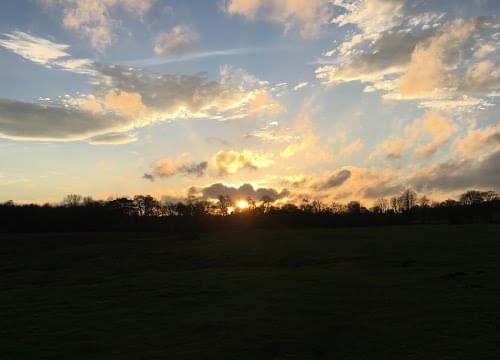
With the days becoming quite short, I am often on the Green as the sun is setting and managed to get this sunset the other day. I love the way the colours are reflected onto the clouds.
October 2015

I have taken quite a lot of photographs this month, so thought I would share them with you in a slideshow. October has been quite variable with some warm sunny days, where the autumn colours have looked spectacular and then there have also been some misty damp mornings, where the dew hangs from the spider webs. The wax cap fungi are putting on quite a good display, although you do have to look quite carefully to find them! I was amazed to see a common darter dragonfly on the Green at the end of October but according to the Staffordshire Wildlife Trust, they can be seen this time of year and the latest they have recorded one is the 11th of November. Enjoy the slideshow - had quite a bit of fun deciding on which theme to use!
September 2015
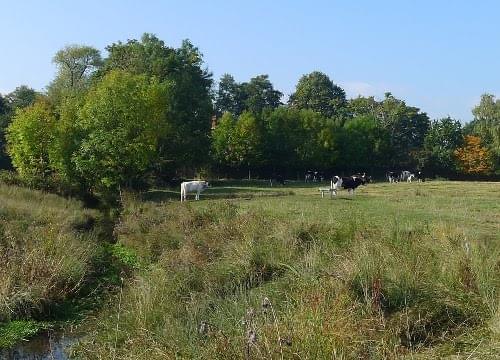
What glorious weather we have had in the last few weeks of September. There is now a definite Autumn feel to the Green and the trees are just starting to change colour. The cattle have done an excellent job of grazing this year, and only a few have managed to escape on a couple of occasions! A number of waxcap fungi are just starting to appear, which is another sign that Autumn is fast approaching. As I am somewhat fixated with these fungi, I can assure you there will be lots of photos of them in next month's post. Excitingly a kingfisher has been seen on Leomansley brook near to the pipe - so keep your eyes open for a flash of blue, next time you are on the Green!

At the end of September, on a glorious sunny Saturday, we had a community drop-in event in the Museum gardens of Beacon park, which was hosted by the Friends of Lichfield Historic Parks. Thanks to everyone who came along and said hello - it was great meeting and talking to you! If you did not manage to come along but meant to, you can download a leaflet (PDF 945KB) which will tell you more about the Green and the work that we do.
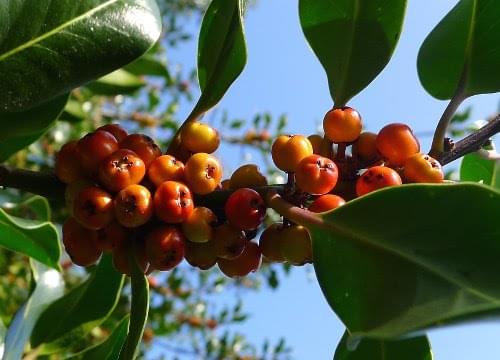
The holly berries are starting to ripen (just to remind you that Christmas is getting closer!) The birds love to eat the berries and so I don't think many will last that long. Surprisingly, sheep and cattle are quite partial to eating the odd holly leaf and if you look closely at a holly tree, the leaves at the bottom of the tree are much more prickly than those higher up. This is thought to be an adaption by the trees to protect them from being grazed. Quite clever really!
August 2015
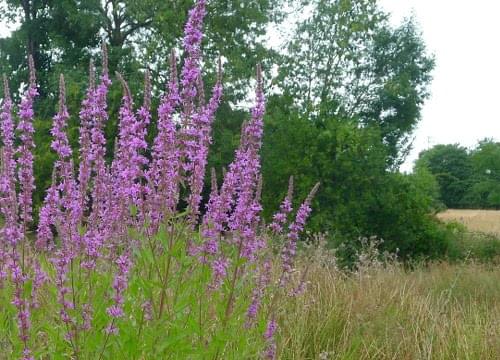
August has been and gone, the birds have finished nesting, the swifts have already departed and there is definitely an Autumnal feel in the air! I was, however, quite excited to see some purple loosestrife flowering this month on the wetter side of the Green. Although it is not an uncommon plant, it is a first for the Green and it is not recorded on our species list. It likes to grow in damp conditions, so I am sure it will thrive on the boggy side of the Green.

Over the summer I have tried putting up the trail camera to record some of the wildlife. However this has not been very successful as the the cattle are very adept at finding the camera, licking it and on one occasion totally dislodging it and almost standing on it! Take a look for yourself.
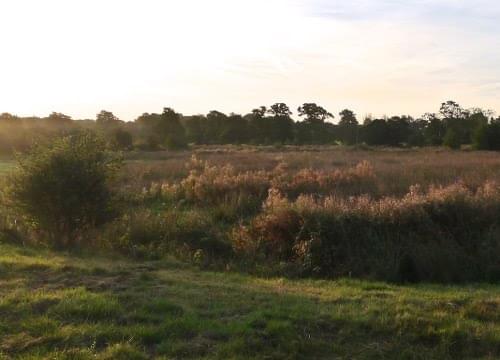
You may or may not be aware that there is the Lichfield Heritage weekend on the 19th and 20th September, where there are lots of things to do. In particular Lichfield Waterworks Trust are doing a number of interesting walks, including a history and wildlife walk of Stowe and Minster Pools. There is also an opportunity to visit Dr Milley's Hopsital in Beacon Street (well worth a visit) and a behind the scenes tour of the Lichfield Record Office (where the Trust's records are kept). Should be a great weekend and well worth supporting!
The Trust will also be holding a drop in event in Beacon Park on Saturday 26th September from 11.00 - 12.00. We will be in the Museum Gardens, so come along and find out more about what we do!
July 2015

I was not sure what to write this month, so instead, I decided to compile a short video of some of the flowers and wildlife that you can see on the Green in July. I hope you enjoy it!!
June 2015
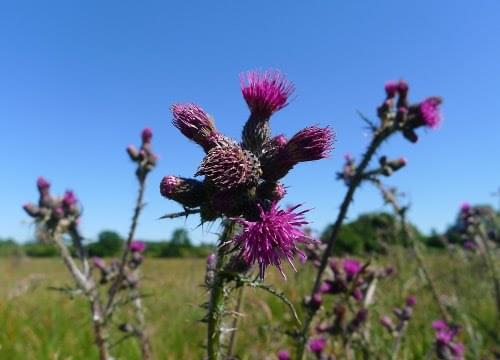
The wetter side of the Green is now developing a purple haze, due to the marsh thistle coming into flower. This under appreciated plant is a non-invasive thistle, (unlike the very invasive creeping thistle, which we go to great lengths to control) and as its name suggests, grows in wetter and boggier ground. It supports a wide range of invertebrates and you can often see bees, hoverflies and butterflies busy feeding on its nectar. Goldfinch also love the seeds and I have seen on most days, a large flock of these colourful and noisy birds feeding on the thistle heads.
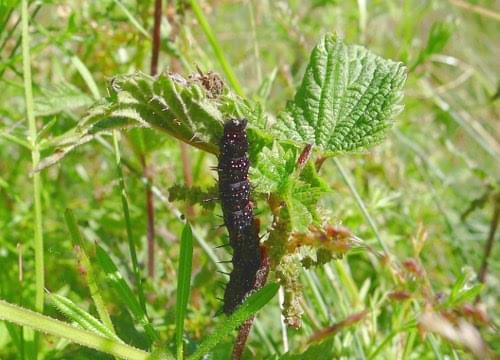
Anyone who watched Countryfile on Sunday, may have seen the feature on the caterpillars of the peacock butterfly feeding on stinging nettles. Well, I have been monitoring our own peacock butterfly caterpillars over the last 10 days. Initially there were about 100 or so small black caterpillars feeding on a patch of nettles, near the stream. They grew very quickly and by the weekend, only one, rather large caterpillar was left. Presumably the others had emerged as peacock butterflies (or been eaten by something else!).
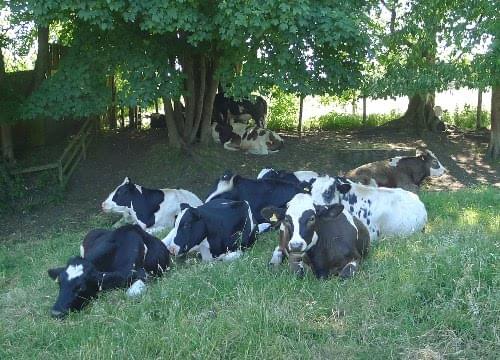
I have tried getting some more footage with my trail camera, but the cattle seem quite adept at finding the camera, giving it a good lick and then on one occasion dragging it on the ground! Fortunately the camera was not damaged, although it was quite a close call, judging from the footage of legs and hooves! The cattle have settled in well and can be seen enjoying the shade of the trees, away from the afternoon sun.
May 2015
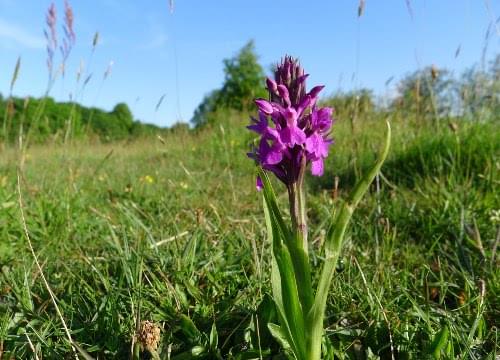
Anyone who has been on the Green this month, will hopefully agree that it is looking spectacular at the moment with swathes of buttercup and pignut across a large part of the Green. However, a closer inspection will also reveal many other species including grasses, sorrels, speedwells and clover - to name but a few. You may also be lucky and spot some of the orchids. I could not decide on which photos (of the many I have taken) to include in the post - so I have put a selection on our facebook page as well. You will also be aware that the cattle are now grazing on the Green and seem to have settled down well.
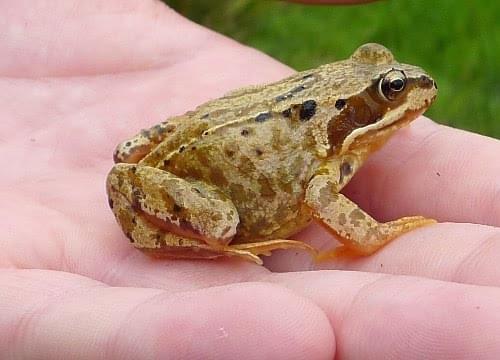
I have been trying to get some more footage from the trail camera this month and I thought it would be interesting to get some shots of the herons that frequent the brook. Frustratingly, I have not been that successful - I have got excellent footage of the top of a heron's head, but not the rest of it!. Anyway, I will persevere and hopefully have something for next month. However, I managed to get a photo of what the herons are eating - the common frog. I just love the markings on this one who, I must admit, posed very obligingly for the photo!
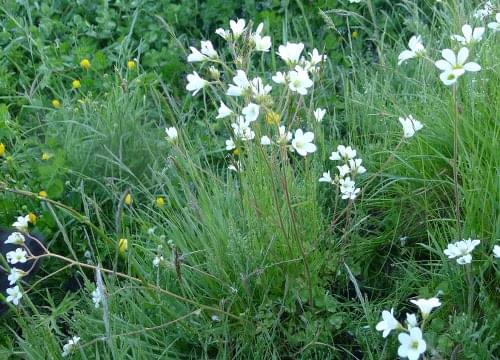
We recently had a visit from Natural England, to inspect the Green and see how successful our Higher Level Stewardship scheme has been. I was very pleased with the positive comments that were made by the visiting ecologist and we have had some very helpful advice. I was also delighted to find a plant, which has a rather beautiful white flower. It is a meadow saxifrage (confirmed by the Natural England ecologist), which is not that common in Staffordshire and it is the first time it has been recorded on the Green!
April 2015
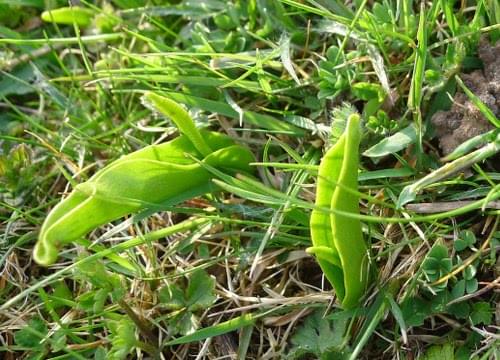
There is so much going on this time of year, that it is difficult to know what to write about! The wood anemone have been and gone and the bluebells are now starting to look their best in Leomansley woods and are well worth a visit. The lady's smock (or cuckoo flower) is starting to flower on the Green. This is an important food source for the orange-tip butterfly, which is also out and about and can usually be seen when the sun is shining. Another plant that is starting to appear is the adder tongue fern (see photo). This is one of the rarest plants on the Green and is also one of the most difficult to find. It is small, green and merges in well with the other vegetation! I am also pleased to say that some of the orchids are starting to emerge and hopefully should be flowering later on in the month or early June.

Since December, and with the help of Georgia Locock, I have been using a trail camera to see what wildlife is on the Green. Fox(es) are a regular visitor and I have been able to get some interesting and quite close-up footage of them. Normally, only one fox is caught on the camera each time, and I have no idea whether it is the same fox I am seeing on each occasion, or a different one! I have put together a short (45 second) movie of some of the clips taken this month. As you can see, he (think it is a he on this occassion) is not shy!
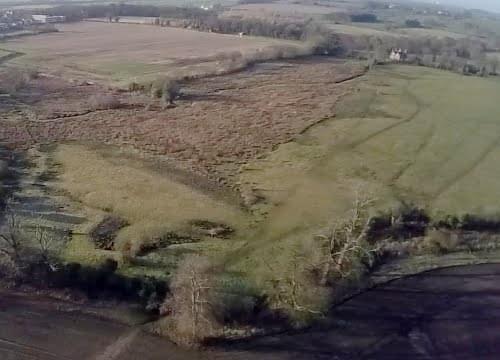
Image courtesy of Steve Martin of Longbow Photography
Just to finish on a high note - well an ariel one anyway! Here is a rather different view of the Green, taken by Steve Martin of Longbow Photography with a small 'drone' with a HD camera attached. I think it is a fascinating photo and certainly highlights the rush cover that we have on the Green. Thanks again to Steve for letting us use his image. And finally, just to let you know that the cattle will be turned onto the Green around the 11th May - provided the grass keeps growing.
March 2015
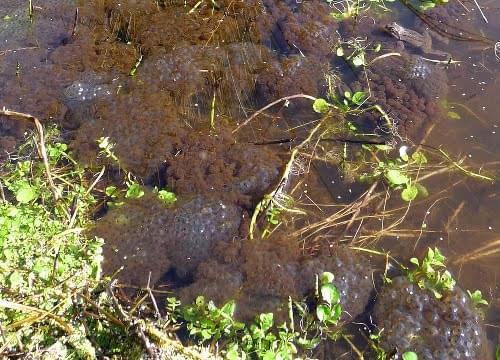
Whilst walking on the boggy side of the Green in early March, I became aware of a very loud croaking noise coming from the brook. A closer investigation revealed the noise was coming from a large number of amorous frogs congregating in the stream! Judging from the amount of frog spawn that had been laid, it would seem that mating was successful and the frog population is alive and well on the Green - good news if you are a heron!
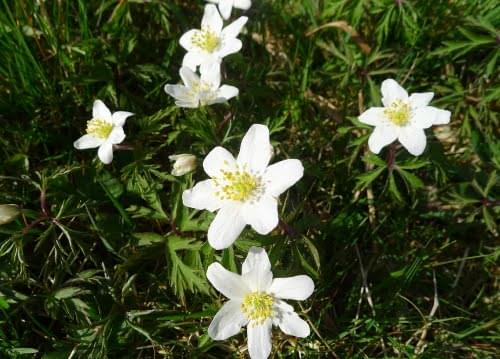
There have been many other signs this month that spring is well on its way - the celandine is just coming into flower as is the wood anemone (one of my all time favourite flowers). The birds are also busy nest building and again we have a number of reed buntings breeding this year. I have continued to monitor the wildlife with a trail camera and there is at least one fox who is a regular visitor to the Green - hopefully I will manage to sort out the footage (and the technology!) for next month's post.
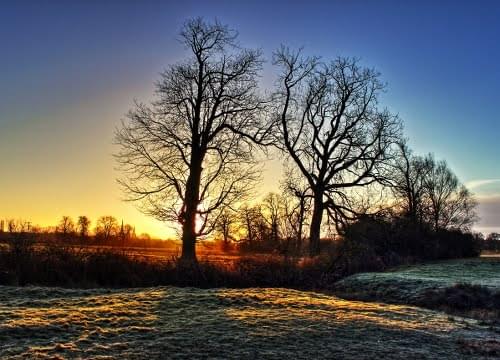
Image courtesy of Steve Martin of Longbow Photography
Unfortunately one of the old horse chestnuts, near the football field gate fell down this month. This tree used to be a favourite roosting place for a little owl and more recently a nesting place for jackdaws. I will miss it, as there was always something interesting happening amongst its branches. This month I am finishing the post with a beautiful photo of sunrise from Pipe Green - not one of mine, but from a much more accomplished photographer, Steve Martin, who took this stunning picture from the Green earlier this month. More of his excellent work can be seen on his Longbow Photography facebook page.
February 2015
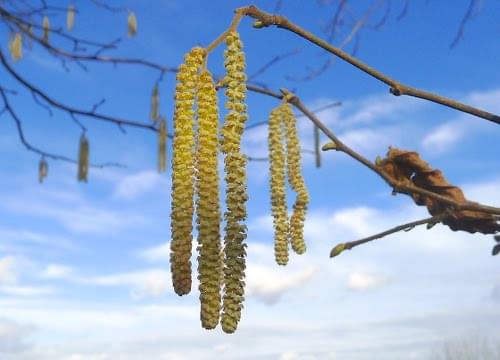
A changeable month on the Green. Sometimes it feels as though spring is around the corner and the next minute sleet is being carried in on an ice cold wind. Nevertheless, there are signs that nature thinks Spring is not too far away. The woodpeckers can frequently be heard drumming on the trees and the catkins are starting to appear. These yellow catkins are the male flowers of the hazel and contain a very light pollen, which is dispersed by the wind - quite a clever strategy given that there aren't many flying insects around in February. I have subsequently read that the female flowers are on the same tree but are very small and have bright red styles (part of the flower to which the pollen sticks). I must go back and see if I can find any.
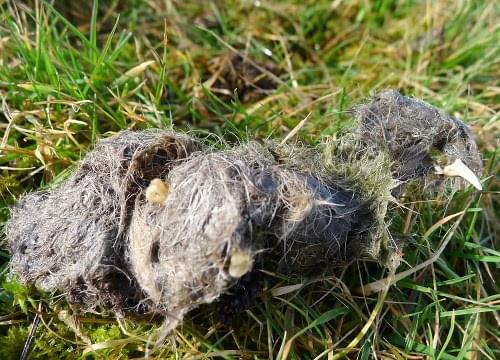
Earlier on in the week, whilst walking on the Green, I came across these bird pellets on the ground. Initially I thought they were owl pellets, but after consulting Georgia Locock and doing a bit of reading on the subject, I now think they are from buzzards. Owls and raptors (buzzards, kestrels etc) regurgitate the indigestible bits from previous meals i.e. fur and bone. Looking at the pellet (photo opposite), it contains a lot of fur (characteristic of a buzzard pellet) as well as a tooth (top right hand side) and what look like some limb bones. Now I am by no means an expert, but these bones are bigger than bones of a shrew/vole and I am thinking that they might be from a mole. This may be quite plausible given that given that there is a healthy mole population and buzzards are a common sight flying overhead.
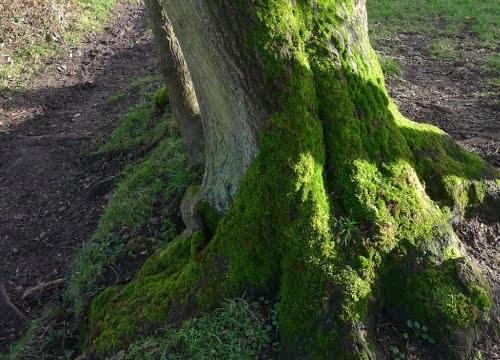
Following on from last months post, I have now added a few more pages on the history part of the website. This includes the Trust's relationship with Maple Hayes (1793 - 1830) and also how the Green was being managed in the first forty year's of the Trust's existence. This last topic has been very interesting to research and all of the information has come from the accounts books, currently held at the Lichfield Record Office. Grazing was an important source of income for the Trust and a lot of effort went into trying to drain excess water from the Green.
Just to finish on a calm note - the moss growing on the ash tree, caught the afternoon sun and glowed a vibrant green.
January 2015
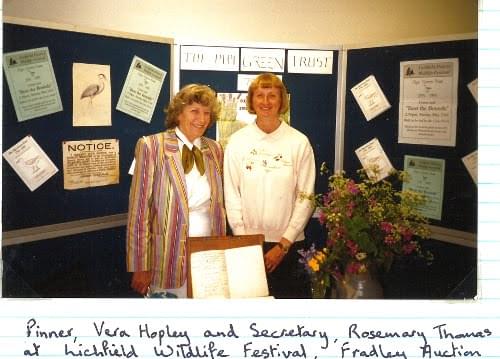
A sad start to 2015 as Vera Hopley, one of our long standing members, passed away aged 92. Vera had been a very active member of the Trust for over forty years, being both secretary in the 1980s and pinner in the 1990s. She, along with others, were instrumental in protecting and preserving the Green as an area of meadowland, at a time when it faced an uncertain future. Vera not only spent many hours on the Green pulling ragwort and cutting thistle, but she was also the first person in the Trust, to start writing a diary and recording events and sightings on the Green - something that I am trying to continue today (albeit in a different format and medium). Vera was keen to promote public awareness of the Green and she not only wrote an informative booklet celebrating the 200th anniversary of the Trust's formation, but she also promoted Pipe Green at public events. The photo, taken from her diary, shows a very smart Vera (on LHS) at the Lichfield Wildlife Festival in 1993. Vera was also a keen and talented artist and amongst other things, she drew our goose logo. So it is somewhat fitting that part of Vera's legacy will still be with us, as we continue our efforts to conserve Pipe Green for the future. Thank you Vera.
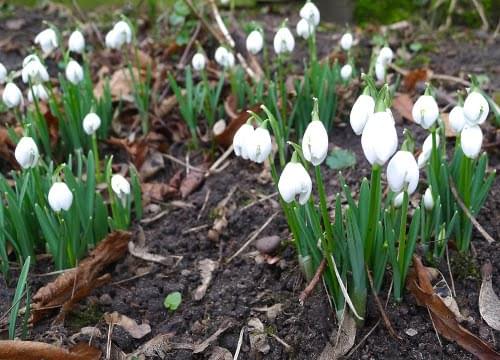
On a happier note, there are signs that spring may be getting closer. A small clump of snowdrops on the edge of the Green are starting to flower, which is always a welcome sight. I have also heard a greater spotted woodpecker drumming on the trees surrounding the Green, again suggesting that the birds are starting to establish breeding territories. Two herons have also been spotted quite regularly by the brook. I don't know if they are a pair or not, but it will be interesting to see if they stay around.
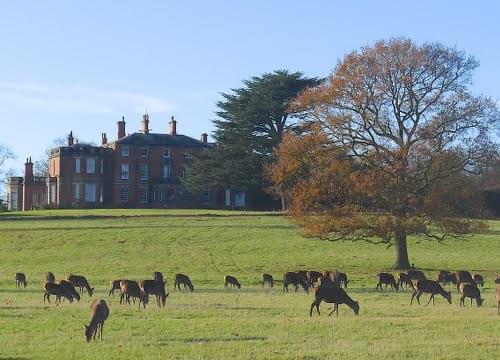 A different view from the Green, this time looking towards Maple Hayes, with the deer helpfully posing in the foreground. Over the last year I have been researching the history of Pipe Green and finally, over December, managed to finally add some pages to the website, under history. So far I have covered what we know about Pipe Green prior to 1793 (not a lot), the establishment of the Pipe Green Trust in 1793 and details on Leomansley Mill when it was owned by the Hartwell's (1791 - 1833). This is very much an on going project and there is loads more still to do. I can see is going to keep me busy for many years to come!
A different view from the Green, this time looking towards Maple Hayes, with the deer helpfully posing in the foreground. Over the last year I have been researching the history of Pipe Green and finally, over December, managed to finally add some pages to the website, under history. So far I have covered what we know about Pipe Green prior to 1793 (not a lot), the establishment of the Pipe Green Trust in 1793 and details on Leomansley Mill when it was owned by the Hartwell's (1791 - 1833). This is very much an on going project and there is loads more still to do. I can see is going to keep me busy for many years to come!
Finally there have been notices put up on the Green by Staffs County Council concerning a footpath diversion. More details of, and links to, these modification orders can be seen on our facebook page. In summary, the County Council are making the footpath that is walked today, a public right of way. The Trust supports this proposal.